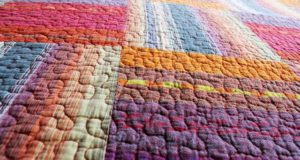 Having talked a little bit about the business last article, maybe it’s appropriate to talk about the long-term bathroom needs that haven’t yet been discussed.
Having talked a little bit about the business last article, maybe it’s appropriate to talk about the long-term bathroom needs that haven’t yet been discussed.
As unusual as it may be to discuss, it is important to consider what will be done about cleanliness if there are any women in your family, as you may not always have access to modern feminine hygiene products. There are a couple of replacements for store-bought feminine products. While absolutely nothing is easy and comfortable at this time, even with modern conveniences (so I’m told), there are a few equally effective and easy to use solutions. And what did the ladies of history due before the creation of mini pads? There isn’t a lot of historical writing on the subject as most historians were male, and the subject was considered “unclean.”
- In ancient Egyptian texts, there is a reference from a scribe writing about careers in Egyptian society. He describes the “negative” position of a worker in the laundry who must wash the “loincloth of a menstruating woman.”
- Most sixteenth and seventeenth century women didn’t wear or do anything under all those layers of dress and petticoats. They didn’t usually wear underwear either. Many simply “took to their bed” for the week.
- Early American women did a couple of things. Some sowed a pocket and stuffed it with wool. It was discarded after use. Some women used layered pieces of old clothing and formed a sort of cloth pad. These were boiled and reused as long as they could be. This is the origin of the expression that a woman is “on the rag.” It literally referred to the rags being used during that time of the month.
Let’s face it—it’s a normal part of every woman’s life as long as they are of childbearing years. It is no less repugnant or taboo than the considerations about the outhouse. Most women have a clear idea of how they want to approach this personal issue, but here are a few lesser-known alternatives.
- The menstrual cap is a little known but very effective way for menstruating women to remain clean in a durable form. This is a small, pliable plastic or latex device, similar in design to a diaphragm that fits snuggly around the cervix. It can have a reservoir at the end and can be removed, cleaned, sanitized, and reinserted. After use it is cleaned and put away until next month.
- A variant on the homemade pocket design crossed with the tampon design is a sleeve (think of a cotton glove finger) that can be filled with absorbent material (cotton, thread-bare cloth, even paper) and inserted. Regular removal, cleansing, and repacking is a more little labor intensive than the pocket, but it is still functional. Several can be prepared in advance each month.
- Sea sponges are found on the ocean floor and commercially available. When sanitized and inserted, they provide excellent absorption and are reusable.
Another consideration concerning that time of the month is how it affects the local wildlife. Disposal of non-reusable products should probably be in the fire, as the potent pheromones from the menstrual odors can attract your animal neighbors. The last thing you need is a full-grown male bear sniffing around and surprising you one night in the outhouse.
To wrap this whole bathroom discussion up for a bit:
There is a place between absolute self sufficiency and urban dwelling. In planning before you make the move, here are a few “amenities” to review.
- For about $300, one can obtain a fiberglass cone with a seat. This is roughly 18” tall with a flanged bottom. The benefit is that it’s easy to clean, which minimizes smell. It’s also reusable for the next outhouse location. The seat is more traditional and comfortable. The negative is that it is one more thing to spend money on and plan for. They are also available without the flange for less money.
- There are a range of composting toilet designs and methods. These range from the simple collect and dump plan to very elaborate, time-consuming, and more expensive construction. There is enough information about self-composting toilets to warrant a separate article, so look for it soon.
- Burley knit terry or jersey material is extremely absorbent and soft. It can be purchased once a year or longer in bulk. Purchased by the bolt, it is very inexpensive and can be used for a variety of associated functions. Cut pieces for individual needs. This can be used as a family cleansing cloth for the outhouse. Women can create an article of choice that can serve their specific female hygiene needs, as well as using these cloth materials for a myriad of other uses in the homestead throughout the year.
- Sanitation with lye: Lye is an effective cleaner and will accelerate decomposition of the solid waste and decrease odors. Make your own lye by running water through non-compacted ashes from the fire. The water removes the lye. Dump this into the hole, and your privy is clean and fresh. An alternative is to store chlorine tables such as for pool use. Break off a piece weekly and drop it down. They can also be used for other cleaning or sanitation activities.
- Another method to minimize outhouse odors is to run a water path along one side of the outhouse. The resulting breeze created from the motion of the water will carry away most of the noxious smell.
How and why someone chooses to live “off the grid” is a personal consideration. The extent to which an individual chooses to rely on themselves and their environment is likewise personal and subject to reevaluation and adaptation. A hundred years ago, there were limited choices. You dug an outhouse and used the pages from the Sears and Roebuck catalog to wipe. Today we have the luxury of trial and error. If a certain approach to waste management isn’t what you had hoped, an alternative is always available. And change can go in both directions. You may start with a “high brow” plan and over time find less dependent and equally satisfactory solutions. You may find “running into town” every couple of months is too often and will learn that necessity is indeed the mother of all invention. Is this subject the ultimate canvas for personalization? Perhaps.
©2011 Off the Grid News
 Off The Grid News Better Ideas For Off The Grid Living
Off The Grid News Better Ideas For Off The Grid Living



